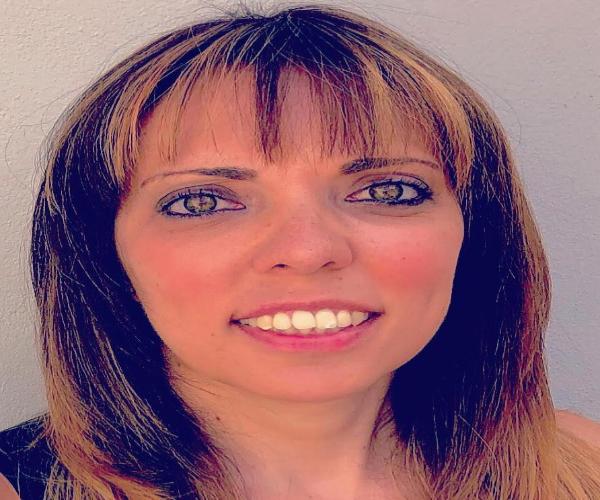“Atherosclerosis is the silent killer of the 21st century.”
Friday, 28 July, 2023
Monica de Gaetano is Ad Astra fellow and Assistant Professor in Pharmacology at the School of Biomolecular and Biomedical Science in University College Dublin. She received SFI-Pathway funding for her work finding novel therapeutic approaches to cardiovascular complications caused by diabetes.

Along with her scientific curiosity, DrMonica de Gaetanohas a “personal reason” for caring so deeply about her field of cardiovascular research.
“Atherosclerosis is called the silent killer of the 21st century and it silently killed my father two years ago,” she says, of the disease caused by a build-up of fats, cholesterol and other substances, known as plaque, on the artery walls.
“Like my Dad, every year, approximately 18 million people die from cardiovascular-related reasons worldwide. I think that, for this reason, this research area cannot be left unstudied or unresearched.”
Dr de Gaetano’s work specifically looks at the dual relationship between diabetes and atherosclerosis “because one increases the risk of the other andvice versa, and both exacerbate the other”.
Diabetes is a chronic, metabolic disease characterised by elevated levels of blood glucose (or blood sugar), which leads over time to serious damage to the heart, blood vessels, eyes, kidneys, retina and nerves. Atherosclerosis is one of the main complications of diabetes.
“Atherosclerosis is dangerous because it's asymptomatic for decades during the lifetime of an individual. There is evidence that even in utero we may have early signs of atherosclerosis - and certainly we do in childhood - but generally it remains silent, subclinical, until the fifth or sixth decade of life.”
There are no signs or symptoms until a catastrophic event occurs, such as a heart attack or stroke. These events are usually fatal or result in life-altering injuries.
“Technically speaking, it's nearly impossible to prevent atherosclerosis, but it's definitely preemptable, which means the progression can be slowed down. Especially if we intervene on high risk patients when they are young or asymptomatic, by tackling the two major risk factors: dyslipidemia (high cholesterol) and inflammation.”
Through exercise, diet and weight loss, some people are able to reverse type 2 diabetes, which is mostly caused by lifestyle factors. But atherosclerosis is not so easily remedied.
“At the moment there is no drug that completely reverses the atherosclerotic plaque once it has been established. But there is in vivo and in vitro evidence in the lab that a regression of the plaque is achievable. Even if this atherosclerotic plaque in the vessel will not be dissolved, the inflammatory part and plaque size can be remarkably reduced, which is the focus of my research.”
Dr de Gaetano’s work seeks to regress atherosclerotic plaque by creating synthetic versions of the molecules known as ‘specialised pro-resolving mediators’ (SPMs), which naturally orchestrate the resolution of inflammation in our bodies.
“In collaboration with Professor Pat Guiry in UCD School of Chemistry and Professor Catherine Godson, director of the UCD Diabetes Complications Research Centre, we started this project a few years ago. We successfully made synthetic versions of these endogenous molecules to be more stable and more reproducible as drugs on a bigger scale.”
Dr de Gaetano led a screening programme in collaboration with the Schools of Medicine and Chemistry.
“Basically, the chemists were designing and synthesising a series of mimetics of lipoxin,” she says, of their work creating synthetic versions of these anti-inflammatory, pro-resolving molecules.
“I will be personally very happy and proud if I can add some little pieces to this very complicated jigsaw, which is the cardiovascular research field, with my contribution through this SFI-Pathway award.”
Listen to the(opens in a new window)podcast.
This article was originally published on March 7th, 2023
“And I was testing their biological profile: in the first instance, their safety, the cytotoxicity, etcetera,in vitro, and then their anti-inflammatory and pro-resolving abilities.”
Cytotoxicity testing ensures that the synthetic lipoxins are not toxic to human cells. During this screening, they tested over thirty molecules, two of which have been identified as drug candidates.
“They've been patented through NovaUCD to the European and the US Patent Offices. They've also been pushed forward intoin vivomodels of acute inflammation, this is thanks to our international collaborators in Australia, Brazil and UK.”
Meanwhile, the SFI-Pathway grant allows Dr de Gaetano and her team to test these two moleculesex vivoon human biopsies obtained from atherosclerosis patients in St Vincent's University Hospital. These are patients undergoing endarterectomy, or surgical removal of the plaque from the artery. Dr de Gaetano collects the sample at the hospital and rushes back to the lab in UCD so it remains fresh.
“Even if it's out of the body it is still alive. Although it is a necrotic piece of tissue, it is still responding. We take this biopsy from the hospital and we treat itex vivowith this molecule mimicking the drug treatment. Then we can see the anti-inflammatory pro-resolving effects. After testing themex vivo,we may consider pushing them forward for clinical trials.”
They are not yet directly administering these molecules to patients.
“The ultimate aim of this study is to find the specific biomarker of inflammation in atherosclerosis patients by doing a simple blood test. And by measuring the level of such biomarkers of atherosclerosis in patients, we may be able to identify who is at higher risk of complications, and so intervene earlier and in a more personalised way. In other words, we may predict if a patient may benefit more from a classical lipid lowering therapy or if they have very high biomarker levels they may also need an anti-inflammatory pro-resolving approach, or a combination of both.”
Dr de Gaetano has been working on this project for the past decade, first as a postdoc and now as a PI.